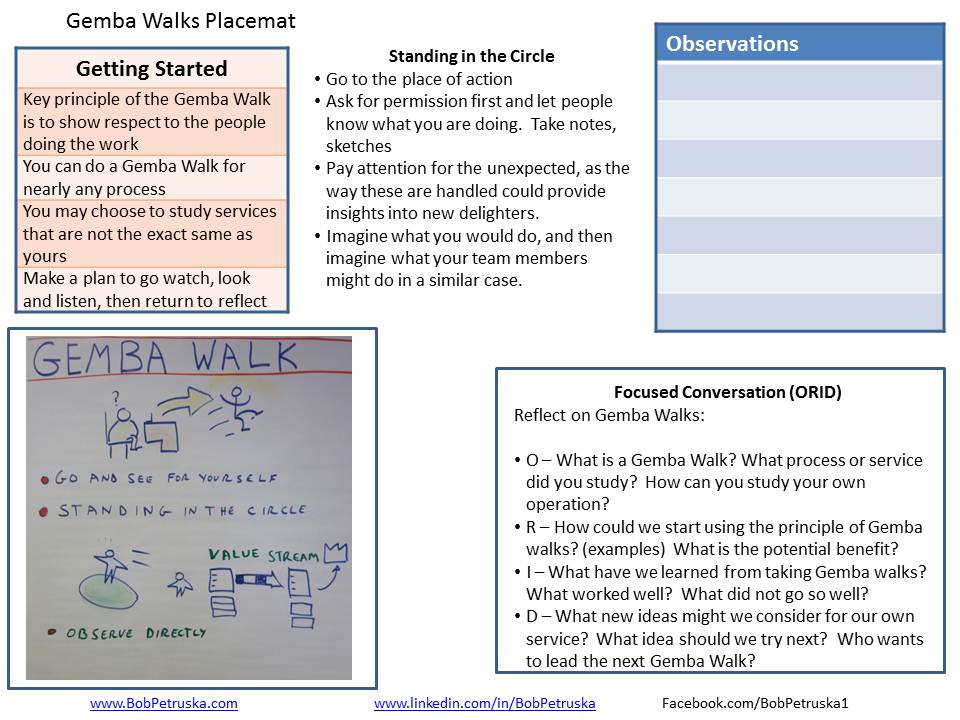One of the first introductions most of us have to Lean is through the term Gemba. Gemba means “the real place.” In Lean terms, we usually view it as “the place where work takes place.” When we try to solve problem, or as I like to say in appreciative terms, improve the process, we should always visit Gemba. It is important that you “go see” for yourself. That physical presence where you can observe directly is the essence of Lean improvement (problem solving).
Would you like this delivered to your inbox?
Even with this acute observation, we don’t really take the Deep-Dive. The Deep-dive consists of some things that I learned from Bob Petruska, author of Gemba Walks for Service Excellence: The Step-by-Step Guide for Identifying Service Delighters and guest on Business901 podcast, We want People to Go See for Themselves. He has created a tool that he calls a placemat that provides a stepping stone to develop a deeper understanding of the process at hand. Included below is an example of one of his placemats on a Gemba Walk. Bob uses them to engage his audience as part of his presentation. He is a master of this and what he has taught me is how the power of conversation can be translated to a presentation.
Taking a deeper-dive requires more than observation. It requires an acceptance that we are not the smartest person in the room; the room is the smartest person. The ability to open up this dialogue and see through the eyes of others is where the deep-dive Gemba Walk takes us. It is that observation that allows true creative thought to emerge.
Designers use the word empathy. I think it is more than that. I think it lies in the ability to shape and form other’s ideas. W. Brian Arthur, the founding head of the Economics Program at the Santa Fe Institute said, “the real power comes from recognizing patterns that are forming and fitting with them. Most tend to be the standard cognitive kind that you can work with in your conscious mind. But there is a deeper level. Instead of an understanding, I would call this deeper level a ‘knowing.” It is about observing. It is about Hansei or reflection. It is about empathy. But just as important, it is about “knowing” and leaving matters take their course. The room typically wins, no matter how much influence you may choose to exert.
How many of us go to a meeting and open our notepad to a blank piece of paper? I have always been a big advocate of not starting with a blank piece of paper. Bob’s placemats are a good example of a prompt for facilitating a discussion. The have a way of moving the conversation in a logical sequence and a great way of turning a debate into a dialogue. Try creating one on your own and using it in the next meeting that you lead. I believe you may see a remarkable difference.

